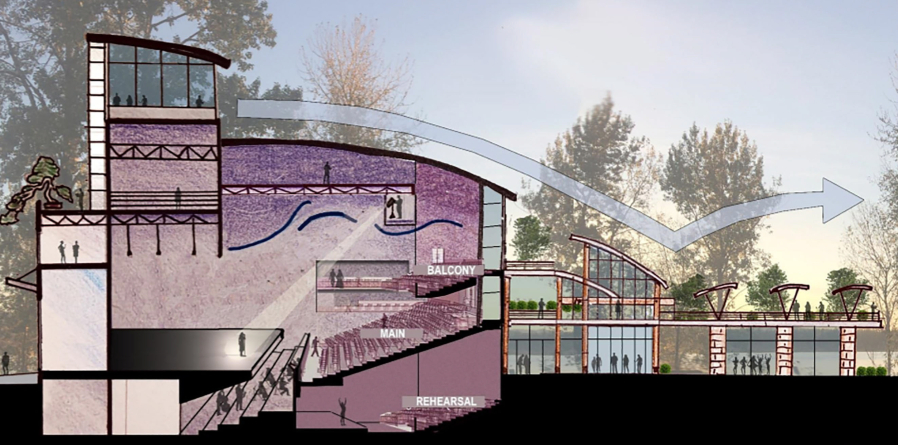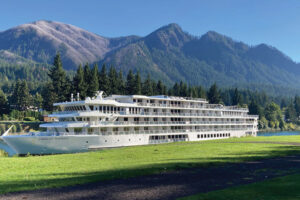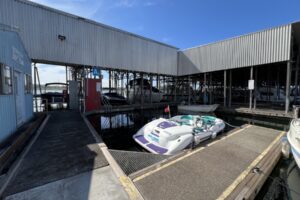A group hoping to build a performing arts and cultural center at the Washougal waterfront say they remain optimistic their vision will someday become a reality.
But Port of Camas-Washougal officials continue to question the financial viability of the project.
“At this time, the performing arts committee has not shown that a performing arts center on Port property would be financially feasible or a benefit,” Port Commissioner Larry Keister recently told the Post-Record.
Keister said he believes the group needs to conduct a feasibility study or at least have an offer to lease land currently marked for development.
Washougal residents Martha Martin, a member of the East County Fire and Rescue Board of Commissioners, and Alex Yost, a business owner and Washougal City Council member, formed a 14-member steering committee in 2019 to investigate the feasibility of placing the center on the waterfront.
During a November 2019 Port Commission meeting, Martin and Yost presented a proposal to develop the facility on the southeast corner of the Waterfront at Parker’s Landing development, taking up between 2.5 acres and 4.5 acres with a 50,000-square-foot building that would include 1,200 seats, a main stage, a rehearsal stage, orchestra pit, studios, a lobby and flexible-use spaces.




